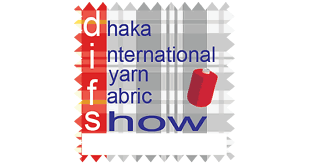Let the textile tussle begin – The return of Donald Trump to power in the United States and the likelihood of increased tariffs on Chinese imports, including textiles, could shift the trade dynamics between these two economic giants dramatically. If Bangladesh plays its cards right, it could emerge as a key beneficiary of this geopolitical shift, solidifying its position in the global garment trade and significantly boosting its presence in the US market.
Let the textile tussle begin: Mostafiz Uddin
If Trump raises tariffs on Chinese textiles, US buyers potentially will seek other sources to maintain profitability. Historically, countries like Vietnam, India, and Bangladesh have been the go-to alternatives. However, I believe, Bangladesh has a unique edge. Vietnam is experiencing rising labour costs, and India faces inefficiencies in its garment sector, leaving Bangladesh as one of the most viable options for US retailers. The US is already one of the largest markets for Bangladeshi garments, with imports reaching nearly $10 billion in 2024. If Chinese garments become less cost-competitive, this figure could grow significantly as new buyers enter the market and existing ones increase their orders.
Moreover, I think this shift could, and should, encourage Bangladesh to expand its product range. Traditionally focused on basic apparel like T-shirts and sweaters, the industry could now branch out into higher-value items such as sportswear, outerwear, and technical textiles, opening new revenue streams. A surge in demand for Bangladeshi garments would likely lead to job creation, benefitting millions of workers and their families. The ripple effects could extend to sectors like logistics, packaging, and transportation, contributing to overall GDP growth. However, seizing this opportunity will require Bangladesh to address several critical challenges.
First and foremost, I think Bangladesh must tackle its infrastructure issues. Delays caused by inefficiencies at ports, outdated road networks, and congested transport systems could undermine our ability to meet the demands of international buyers. Improving infrastructure should be a top priority for both the government and private sector. Buyers in the US are unlikely to tolerate shipment delays, especially when alternative suppliers might be more reliable.
In today’s global market, buyers care deeply about ethical practices and environmental responsibility. US retailers will be paying close attention to labour standards and factory conditions, and in my view, Bangladesh must ensure it is meeting these expectations to avoid reputational risks and maintain its competitive edge. Additionally, adopting sustainable practices is equally important. Buyers are increasingly drawn to suppliers that use renewable energy and other sustainable factory practices, and Bangladesh could cement its reputation by investing in green technologies. But government policies and investments play a crucial role in this process.
Another issue is our industry’s heavy reliance on imported raw materials. Despite our strength in garment production, Bangladesh imports much of its textiles, particularly cotton and synthetic fabrics. This dependency increases costs and lengthens production timelines. I think investing in domestic textile manufacturing could be a game-changer, enabling our industry to reduce costs and improve efficiency while becoming more self-sufficient.
Diversification is another critical step. By moving into higher-value products and niche markets, Bangladesh can increase its revenue and reduce dependence on low-margin items. Additionally, I think proactive trade negotiations with the US will be vital. Securing favourable terms could make Bangladesh an even more attractive sourcing destination for American retailers.
That said, I recognise that Bangladesh isn’t the only country with its eyes on this opportunity. Competitors like Vietnam, Indonesia, and even Mexico are also well-positioned to attract buyers seeking alternatives to China. In my opinion, Bangladesh must differentiate itself by emphasising its ability to deliver quality products at competitive prices while ensuring reliability and sustainability.
While we do not yet know what Trump will do—there is talk of a 10 percent tariff on all imports from China—this moment represents a pivotal opportunity for Bangladesh. If managed wisely, the benefits could extend far beyond the garment industry. Increased export earnings could fuel investments in other sectors, such as home textiles and accessories, creating a more diverse economic base.
A potential shift in US-China trade relations is a rare chance for Bangladesh to take a giant leap forward in the global garment trade. With careful planning, strategic investments, and a commitment to addressing its challenges, Bangladesh can position itself as a key player in the US market and beyond.
 4Textile.com World Textile & Apparel Industry Events, News
4Textile.com World Textile & Apparel Industry Events, News







